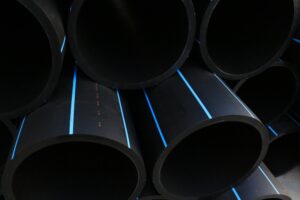The Future of Gas Systems: Innovations and Best Practices for Gas Pipeline Installation
Gas systems and gas pipeline installation are crucial components of the global energy infrastructure. As demand for natural gas continues to rise, the industry is focusing on enhancing the efficiency, safety, and environmental sustainability of gas systems. This blog explores the latest innovations in gas systems, best practices for gas pipeline installation, and the future trends shaping this vital sector.
The Importance of Gas Systems
Gas systems play a vital role in delivering natural gas from production sites to consumers. These systems include a network of pipelines, compressors, and storage facilities that ensure a continuous and reliable supply of gas. Natural gas is used for various applications, including heating, electricity generation, and as a feedstock for chemical manufacturing.
Innovations in Gas Systems
Advanced Materials:
- High-Density Polyethylene (HDPE) Pipes: HDPE pipes are increasingly used in gas systems due to their flexibility, corrosion resistance, and durability. These pipes can withstand high pressures and are easier to install compared to traditional steel pipes.
- Composite Pipes: Composite materials, which combine the strength of metals with the corrosion resistance of plastics, are also gaining popularity. These pipes are lightweight and have a longer lifespan, reducing maintenance costs.
Smart Pipeline Monitoring:
- Internet of Things (IoT): IoT technology enables real-time monitoring of gas pipelines. Sensors placed along the pipeline can detect leaks, pressure changes, and other anomalies, allowing for immediate intervention.
- Predictive Maintenance: Machine learning algorithms analyze data from IoT sensors to predict potential issues before they occur. This proactive approach minimizes downtime and enhances safety.
Environmentally Friendly Technologies:
- Methane Leak Detection and Repair (LDAR): Advanced LDAR technologies, such as infrared cameras and drones, help identify and fix methane leaks. Reducing methane emissions is critical for minimizing the environmental impact of gas systems.
- Carbon Capture and Storage (CCS): Integrating CCS technologies with gas systems can significantly reduce greenhouse gas emissions. CCS involves capturing carbon dioxide produced during gas processing and storing it underground.
Hydrogen Integration:
- Hydrogen as a Clean Fuel: Hydrogen is gaining traction as a clean fuel alternative. The integration of hydrogen into existing gas infrastructure, known as “blending,” can reduce carbon emissions from natural gas systems. Research and pilot projects are exploring the feasibility of transporting higher concentrations of hydrogen through gas pipelines.
Best Practices for Gas Pipeline Installation
Planning and Design:
- Route Selection: Careful route selection is essential to minimize environmental impact and avoid densely populated areas. Geographic Information Systems (GIS) and satellite imagery can aid in selecting the optimal pipeline route.
- Environmental Impact Assessment (EIA): Conducting a thorough EIA ensures that potential environmental risks are identified and mitigated. This assessment considers factors such as soil erosion, water contamination, and impact on local wildlife.
Safety Measures:
- Pipeline Integrity Management: Implementing a comprehensive integrity management program is crucial for maintaining the safety of gas pipelines. This includes regular inspections, pressure testing, and corrosion control.
- Emergency Response Planning: Developing and regularly updating an emergency response plan ensures that any incidents are managed effectively. This plan should include protocols for leak detection, evacuation procedures, and communication with local authorities.
Construction Techniques:
- Horizontal Directional Drilling (HDD): HDD is a trenchless technology used to install pipelines under obstacles such as rivers and roads. This method minimizes surface disruption and reduces the environmental impact of construction.
- Automated Welding: Automated welding techniques improve the quality and consistency of pipeline joints. This reduces the risk of leaks and enhances the overall integrity of the pipeline.
Quality Control and Testing:
- Non-Destructive Testing (NDT): NDT methods, such as ultrasonic testing and radiography, are used to inspect welds and detect defects without damaging the pipeline. Regular NDT ensures that the pipeline meets safety and quality standards.
- Hydrostatic Testing: Before commissioning, pipelines are filled with water and pressurized to check for leaks and verify structural integrity. This testing is crucial for ensuring the pipeline can withstand operating pressures.
Case Studies in Gas Pipeline Installation
The Nord Stream Project:
- The Nord Stream pipeline, running from Russia to Germany through the Baltic Sea, is one of the largest gas infrastructure projects in Europe. The project employed advanced construction techniques, including HDD and deep-water welding, to ensure minimal environmental disruption. The use of composite materials in certain sections helped enhance the pipeline’s durability and efficiency.
The Trans-Anatolian Natural Gas Pipeline (TANAP):
- TANAP is a significant infrastructure project that transports natural gas from Azerbaijan to Turkey and Europe. The pipeline spans over 1,800 kilometers and incorporates advanced monitoring systems and predictive maintenance technologies. The project has set a benchmark for cross-border gas transportation and integration with renewable energy sources.
The Role of Regulations and Standards
Regulations and standards play a crucial role in ensuring the safety and reliability of gas systems. Key regulatory frameworks include:
The Pipeline and Hazardous Materials Safety Administration (PHMSA):
- PHMSA regulates pipeline safety in the United States, setting standards for construction, operation, and maintenance. Compliance with PHMSA regulations helps mitigate risks and ensure the safe operation of gas pipelines.
The International Organization for Standardization (ISO):
- ISO provides global standards for various aspects of pipeline construction and operation. Standards such as ISO 13623 for petroleum and natural gas industries guide best practices and ensure consistency across international projects.
Local and National Regulations:
- In addition to international standards, local and national regulations address specific regional challenges and requirements. Adhering to these regulations ensures that gas systems are tailored to the local context and meet community expectations.
Future Trends in Gas Systems and Pipeline Installation
Digital Transformation:
- Digital Twin Technology: A digital twin is a virtual replica of a physical pipeline that can be used for monitoring, simulation, and optimization. Digital twins enable operators to analyze data in real time, predict failures, and improve maintenance strategies.
- Blockchain for Transparency: Blockchain technology can enhance transparency and traceability in the gas supply chain. Smart contracts and secure transactions can streamline operations and reduce the risk of fraud.
Renewable Natural Gas (RNG):
- Biogas and Synthetic Methane: RNG is produced from organic waste and renewable energy sources. Integrating RNG into existing gas systems reduces reliance on fossil fuels and lowers carbon emissions.
- Power-to-Gas (P2G): P2G technology converts surplus renewable electricity into hydrogen or synthetic methane. This gas can be injected into the natural gas grid, providing a flexible solution for storing renewable energy.
Enhanced Safety Protocols:
- Artificial Intelligence (AI) for Risk Assessment: AI algorithms can analyze vast amounts of data to identify potential risks and recommend preventive measures. This enhances the safety and reliability of gas systems.
- Augmented Reality (AR) for Training: AR technology can be used to train pipeline workers in a virtual environment. This immersive training improves skills and reduces the risk of accidents during actual operations.
Integration with Renewable Energy:
- Hybrid Energy Systems: The integration of gas systems with renewable energy sources, such as solar and wind, can create hybrid energy systems that provide a stable and sustainable energy supply. This approach can help balance the intermittency of renewable sources and ensure a reliable energy grid.
- Energy Storage Solutions: Advanced energy storage solutions, such as batteries and pumped hydro storage, can be combined with gas systems to enhance grid stability and manage energy supply and demand effectively.
Conclusion
The future of gas systems and gas pipeline installation is marked by innovation, sustainability, and enhanced safety. Advanced materials, smart monitoring technologies, and environmentally friendly practices are transforming the industry. By adopting best practices and leveraging emerging trends, the gas sector can continue to meet the growing energy demand while minimizing its environmental footprint. As we move towards a more sustainable energy future, the role of gas systems will remain critical, driving progress and ensuring reliable energy supply for generations to come.





